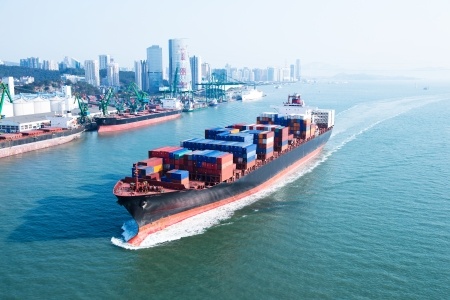4 Key Covid Impacts – Update on Foreign Trade
Since the outbreak of Covid-19 in January, the Chinese government has taken rigorous measures in order to restrain the pandemic. Quarantine and internal border controls have been imposed, and economic activity becalmed. The statistics suggest that the impact is much more severe than expected. According to the figures released by the Statistics Department of China, the Gross Domestic Product (GDP) for Q1 is US$2,959 Billion, a sharp reduction of 6.8% in comparison to the previous quarter, which makes it the worst quarterly Real GDP Growth Rate ever on record. At the same time, unemployment rate hits 5.7%, a record spike in history.
There is also the mounting economic cost of the entire global economy. Companies in other countries dependent on Chinese supply chains have already faced a slowdown, and the recent lock-down is hitting China’s foreign trade sector significantly.
Together with Investment, Consumption and Export it is normally described as one of the “Three Carriages” (or engines in another word) that drives China’s economy, and is used to being the contributor of one third of its GDP, two decades ago when China had just joined the WTO.
As trade tension with the US draw out, the world’s second largest economy is trying to diversify its supply chains and accelerate its opening up with other countries intending to reduce its reliance on the US in the longer term. However, the coronavirus being a “Black Swan Incident” has affected its strategy and caused a broad and deep economic erosion.
Tens of thousands of export-oriented manufacturers have confronted the same experience; from being too busy to fulfill orders after reopening, to struggling to stay in business because of lack of orders.
On June 7th , the General Customs released a report stating that total import and export value dropped by 4.9%, including a decrease of 4.7% for export and of 5.2% for import.
These numbers indicate four major challenges for the external trade:
1. Manufacturers reopened without being able to restore production as cancelling or delaying orders has become a new normal.
2. Lock-down and closure of borders have pushed up logistic and shipping cost globally, especially airfreight due to restricted number of airlines and flights.
3. Those whose cash flow drained out have to lay off the workers, or even close down. For example, a factory with the revenue of US$15 million would normally have to pay their suppliers US$1.2 million monthly as long as the machines are running to keep it in operation.
4. Without trade fairs that have been cancelled or postponed, it’s difficult for companies relying on these flat-forms to promote or win business.
As a direct result, about 247,000 companies went bust nation-wide in the first two months of the year, implying tens of millions of jobs lost.
While the Chinese government is trying to help the exporters recover slowly, it has been focusing on switching more attention from trade to consumption and infrastructure investment. Their intention is to make its growth domestically driven with a similar approach conducted in the financial crisis in 2008. But will it work again this time in a different political climate? This is the big question mark.

